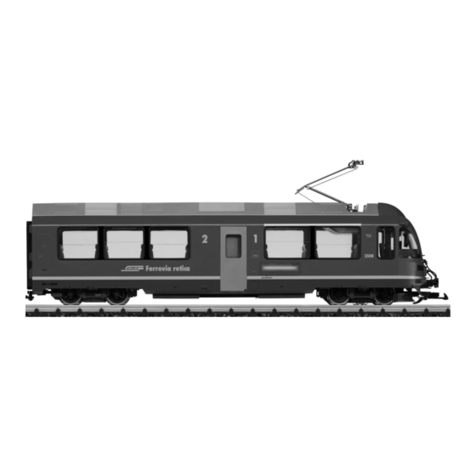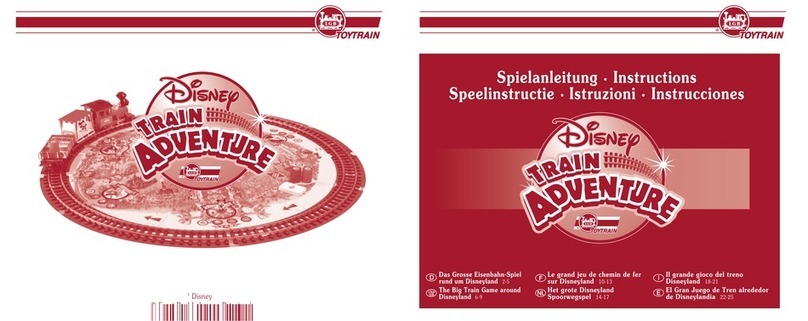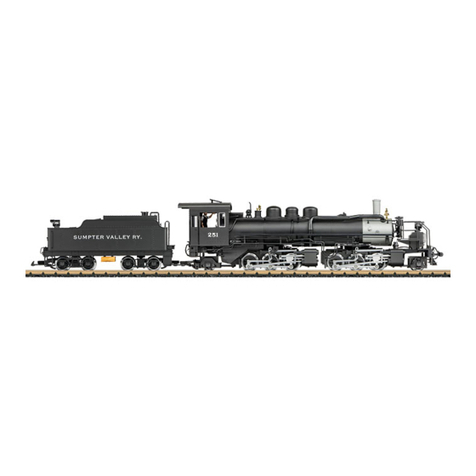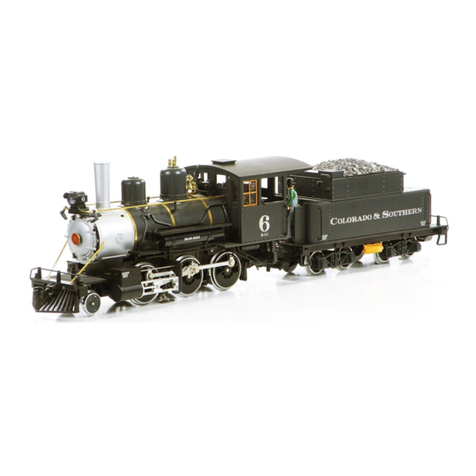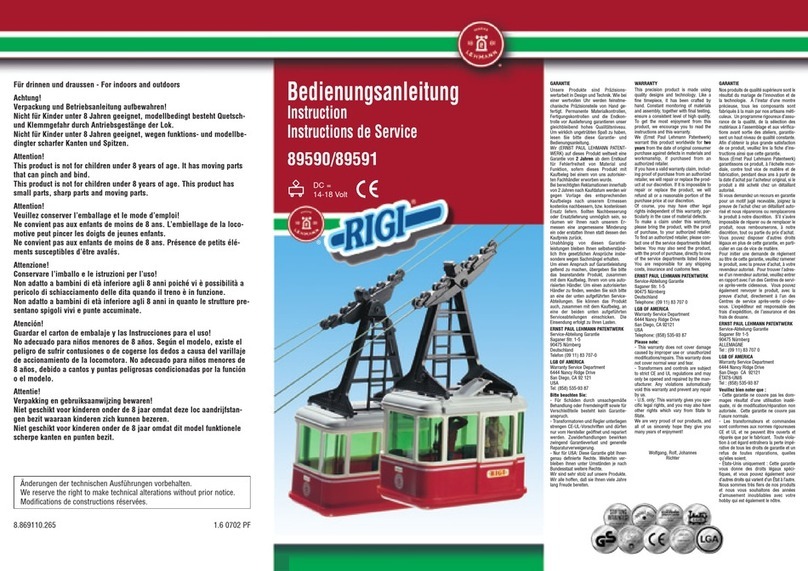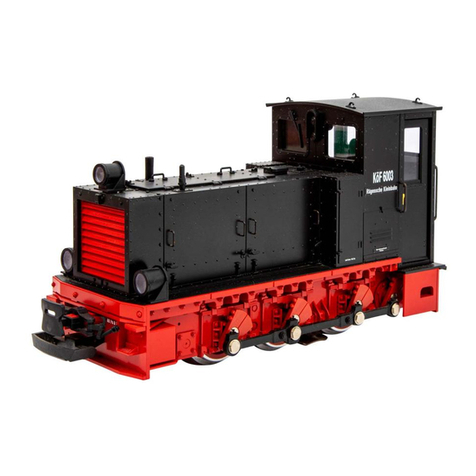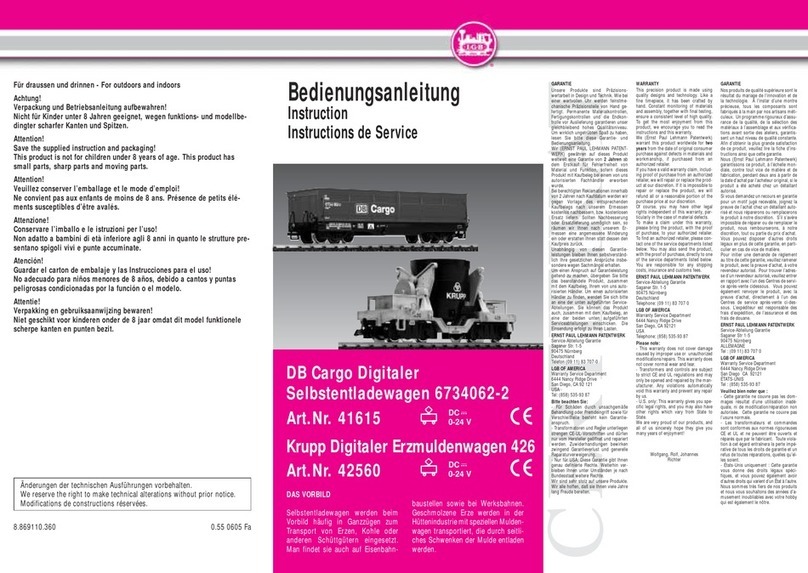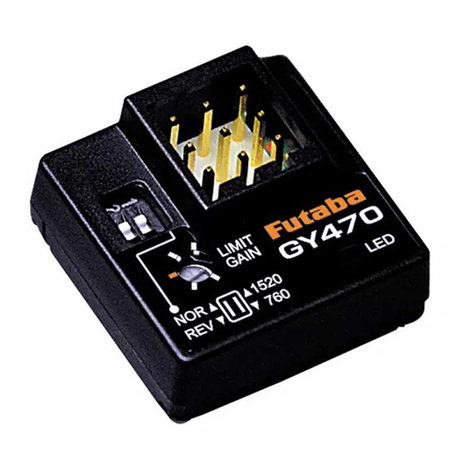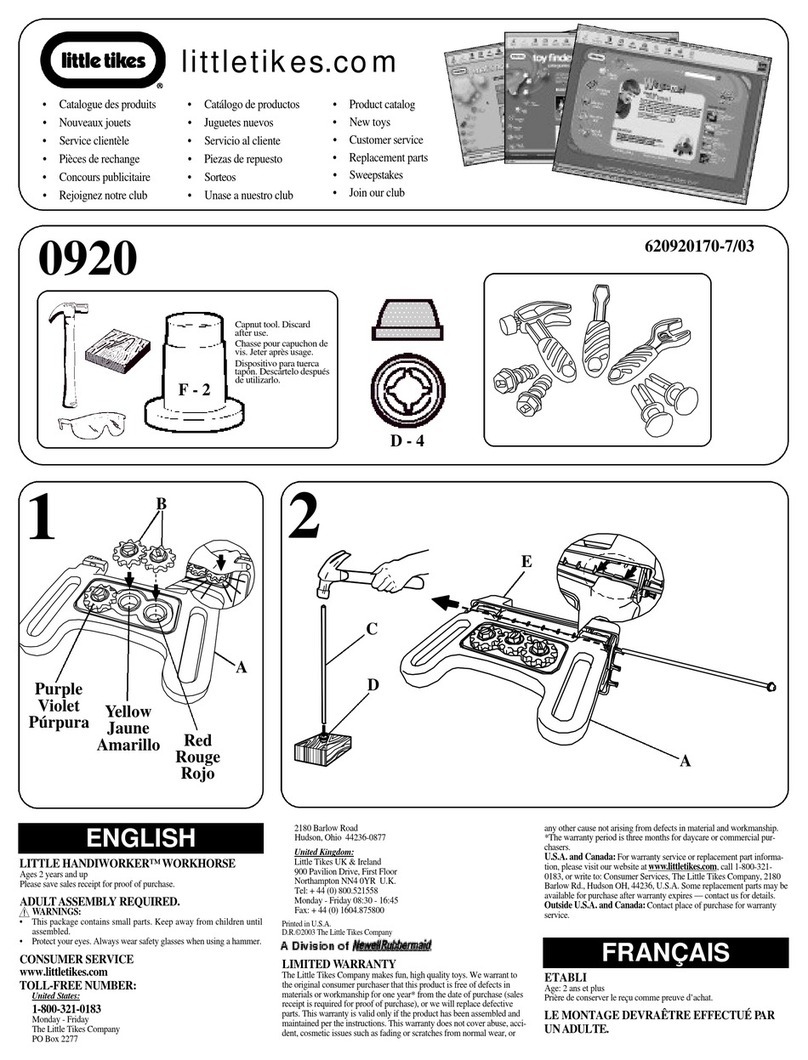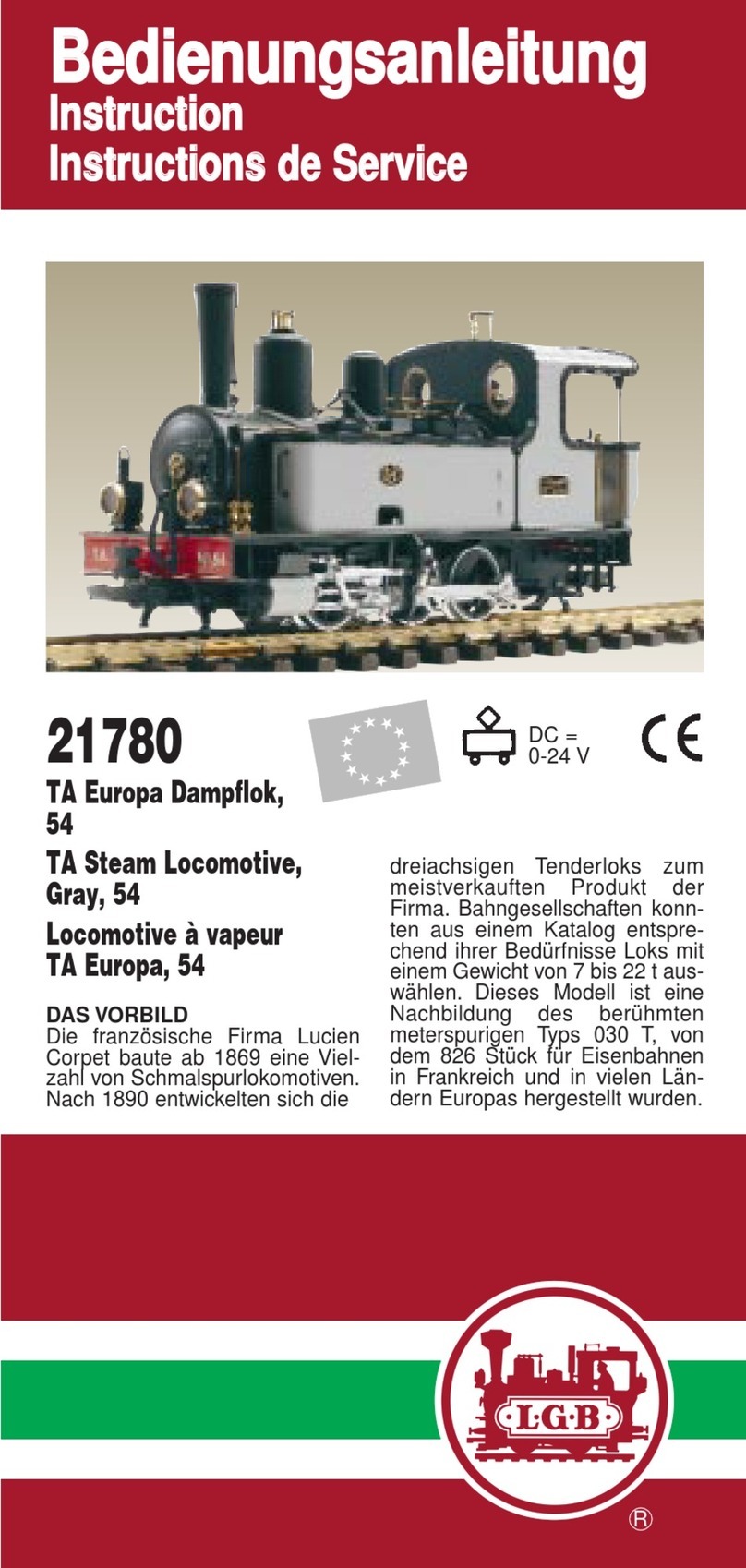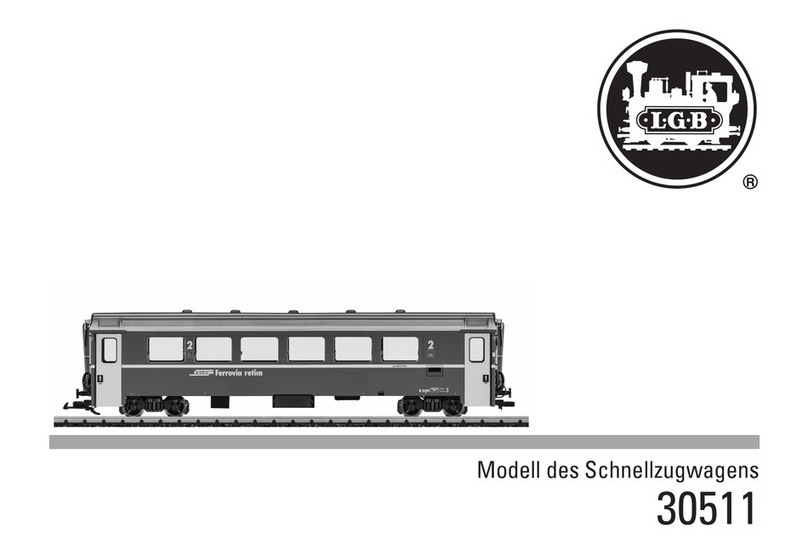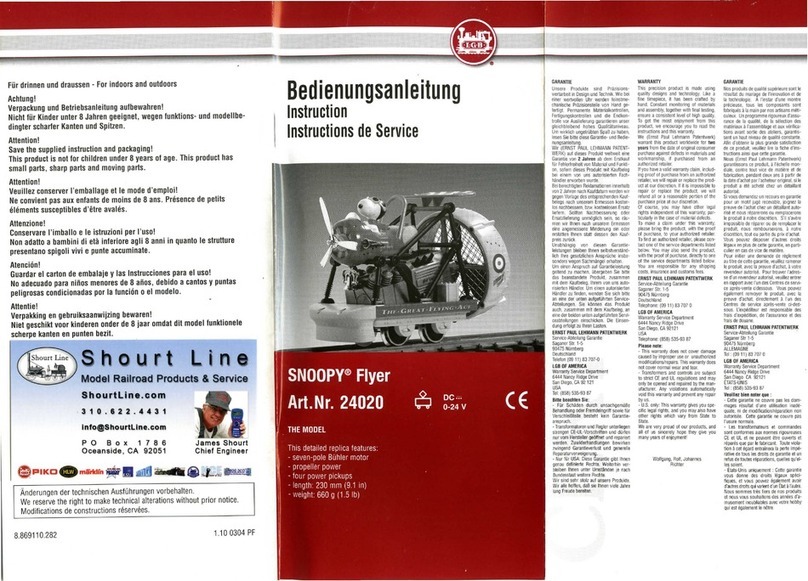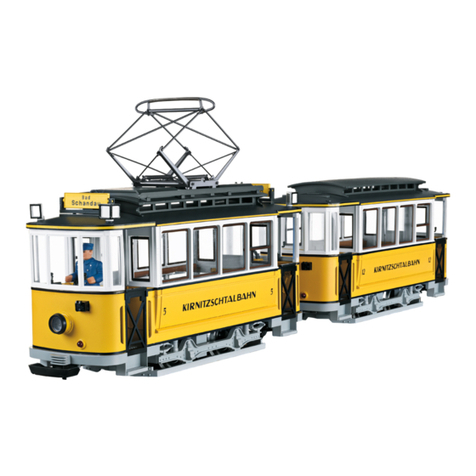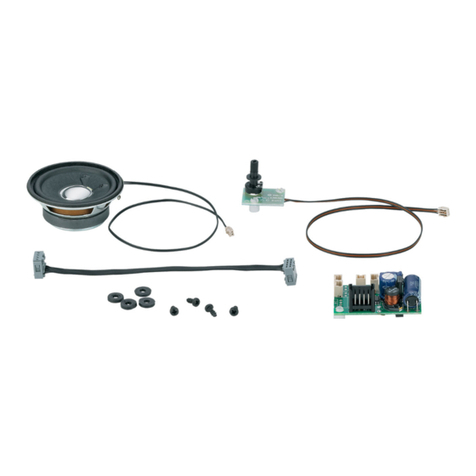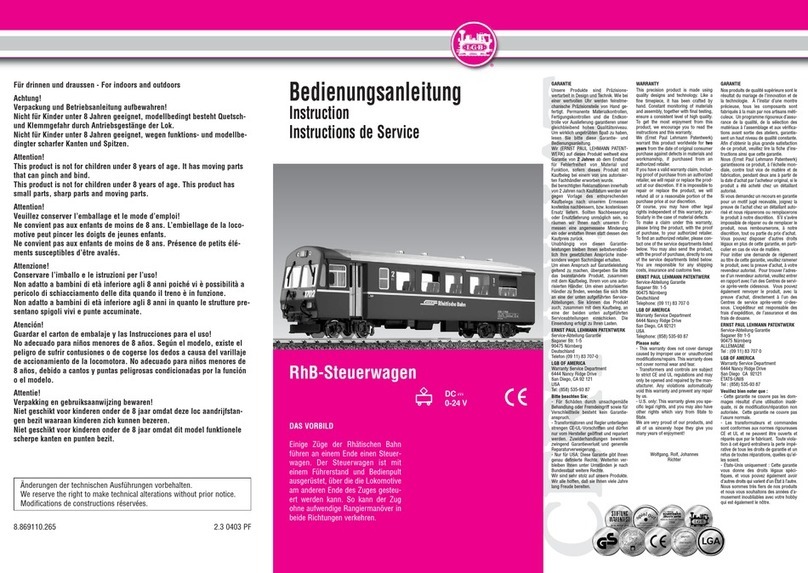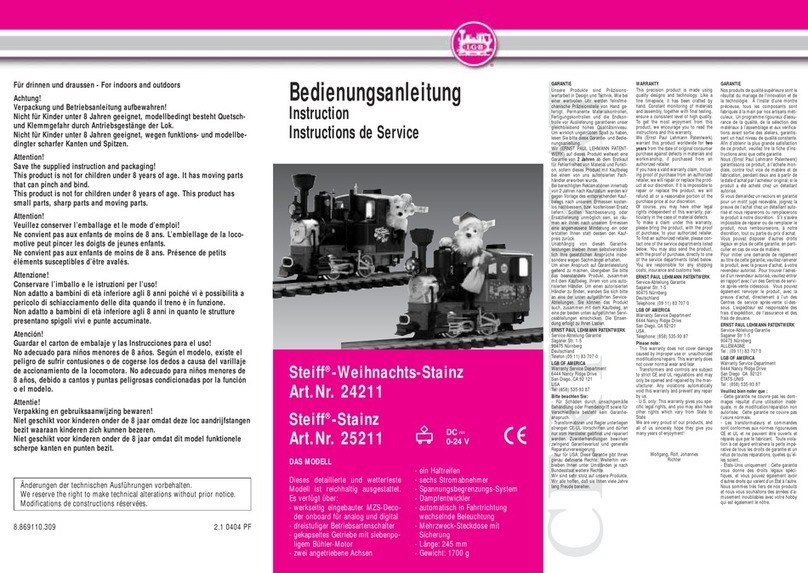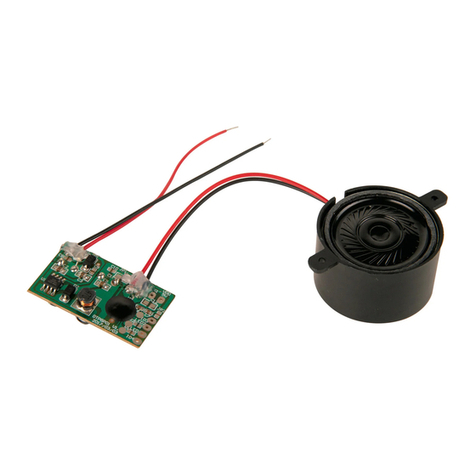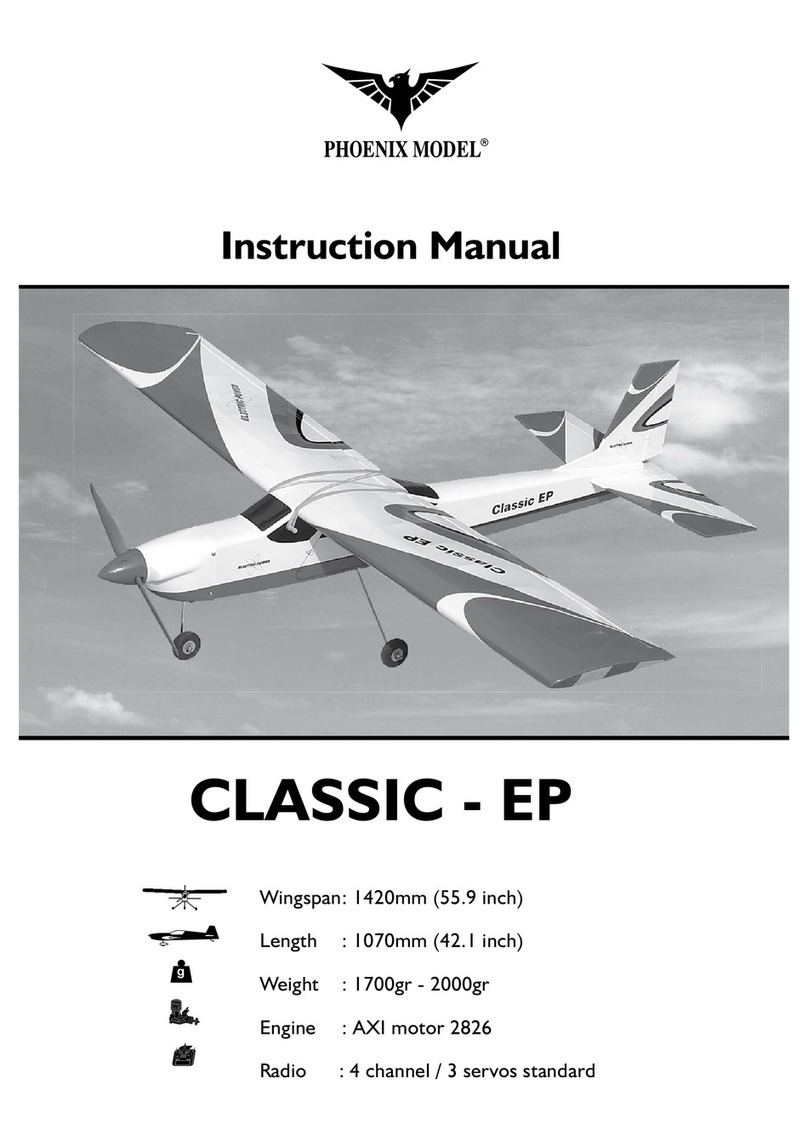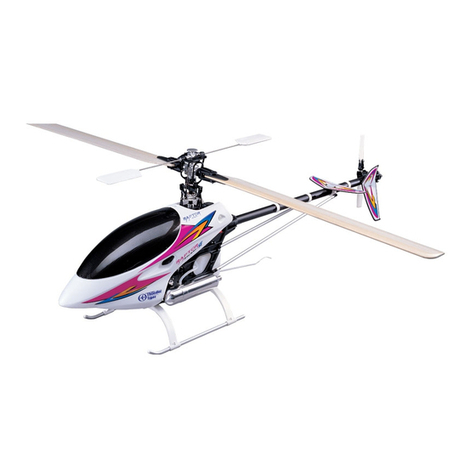4
Sicherheitshinweise
• DasModelldarfnurmiteinemdafürbestimmten
Betriebssystem eingesetzt werden.
• NurSchaltnetzteileundTransformatorenverwenden,
die Ihrer örtlichen Netzspannung entsprechen.
• DasModelldarfnurauseinerLeistungsquelleversorgtwerden.
• BeachtenSieunbedingtdieSicherheitshinweiseinderBedienungsanleitungzu
Ihrem Betriebssystem.
• NichtfürKinderunter15Jahren.
• ACHTUNG!FunktionsbedingtescharfeKantenundSpitzen.
Wichtige Hinweise
• DieBedienungsanleitungistBestandteildesProduktesundmussdeshalbaufbe-
wahrt sowie bei Weitergabe des Produktes mitgegeben werden.
• GewährleistungundGarantiegemäßderbeiliegendenGarantieurkunde.
• FürReparaturenoderErsatzteilewendenSiesichbitteanIhrenLGB-Fachhändler.
• VerbauteLED`sentsprechenderLaserklasse1nachNormEN60825-1.
• Entsorgung:www.maerklin.com/en/imprint.html
Funktionen
• DasModellistfürdenBetriebaufLGB-Zweileiter-Gleichstrom-Systemenmit
herkömmlichenLGB-Gleichstrom-Fahrpultenvorgesehen(DC,0-24V).
• WerkseitigeingebauterMultiprotokoll-Decoder(DC,DCC,mfx).
• ZumEinsatzmitdemLGB-Mehrzugsystem(DCC)istdasModellaufLokadresse03
programmiert.ImBetriebmitmfxwirddieLokautomatischerkannt.
• Mfx-TechnologiefürMobileStation/CentralStation.
NameabWerk:F7A 5574
• VeränderbareLautstärkederGeräusche
• ImAnalogbetriebistdasBetriebsgeräuschan.
• DieFunktionenkönnennurparallelaufgerufenwerden.DieserielleFunktionsaus-
lösungistnichtmöglich(beachtenSiehierzudieAnleitungzuIhremSteuergerät).
Vorbereitung
UmeinenproblemlosenBetriebdieserLokzugewährleisten,sinddiehinteren
Bremszylinder am vorderen Drehgestell nicht montiert. Die Bremszylinder liegen
bei.FallsdieLoknuralsVitrinenmodellverwendetwird,könnendieBremszylinder
montiert werden. Erst die beiden Schrauben am Seitenrahmen des Drehgestells lösen
unddieSeitenrahmenabnehmen.DanndieZylinderindierichtigePositionschieben.
Seitenrahmen wieder montieren.
Betriebsartenschalter
DasModellhateinendreistugenBetriebsarten-SchalteranderRückwand(Abb.1):
Pos.0 Lokstromlosabgestellt
Pos. 1 alles an
Pos. 2 wie Pos. 1
Verbindung zur B-Unit
AnderRückseitederLokisteineSteckdosezumAnschlusseinerB-Unitmit
Lautsprecher.HierkannnurdieB-Unit20588angeschlossenwerden.DerAnschluss
ältererB-UnitsoderandererWagenführtzuBeschädigungen.
Achtung beim Digitalbetrieb!
WirdeineindieentgegengesetzteRichtungweisendeA-Unitangekuppelt(z.B.die
klassischeLokkombinationA-B-A),somußdieFahrtrichtungderzweitenLokumpro-
grammiertwerden,dasonstdieLoksinentgegengesetzteRichtungenfahrenwürden.
Dazu Register CV 29 des werkseitig eingebauten Decoder on board auf Funktionswert
5programmieren(beachtenSiehierzudieAnleitungzuIhremSteuergerät).
Elektronischer Sound
GlockeundHornkönnenmitdembeiliegendenLGB-Sound-Schaltmagneten(17050)
ausgelöstwerden.DerSchaltmagnetlässtsichzwischendieSchwellendermeisten
LGB-Gleiseklipsen.
DerMagnetbendetsichseitlichversetztunterdemeingeprägtenLGB-Logo.Platzie-
renSiedenMagnetenaufeinerSeite,umdasHornauszulösen,wenndieLokdiese
Stelleüberquert.BeiAnordnungaufderanderenSeiteertöntdieGlocke.
Multiprotokollbetrieb
Analogbetrieb
Der Decoder kann auch auf analogen Anlagen oder Gleisabschnitten betrieben wer-
den.DerDecodererkenntdieanalogeGleichspannung(DC)automatischundpasst
sichderanalogenGleisspannungan.EssindalleFunktionen,dieuntermfxoderDCC
fürdenAnalogbetriebeingestelltwurdenaktiv(sieheDigitalbetrieb).
Digitalbetrieb
Der Decoder ist ein Multiprotokolldecoder. Der Decoder kann unter folgenden Digital-
Protokolleneingesetztwerden:mfxoderDCC.
Das Digital-Protokoll mit den meisten Möglichkeiten ist das höchstwertige Digital-
Protokoll.DieReihenfolgederDigital-ProtokolleistinderWertungfallend:
Priorität1:mfx;Priorität2:DCC;Priorität3:DC
Hinweis:Digital-Protokollekönnensichgegenseitigbeeinussen.Füreinenstö-
rungsfreienBetriebempfehlenwir,nichtbenötigteDigital-ProtokollemitCongura-
tionsVariable(CV)50zudeaktivieren.
DeaktivierenSie,soferndiesIhreZentraleunterstützt,auchdortdienichtbenötigten

